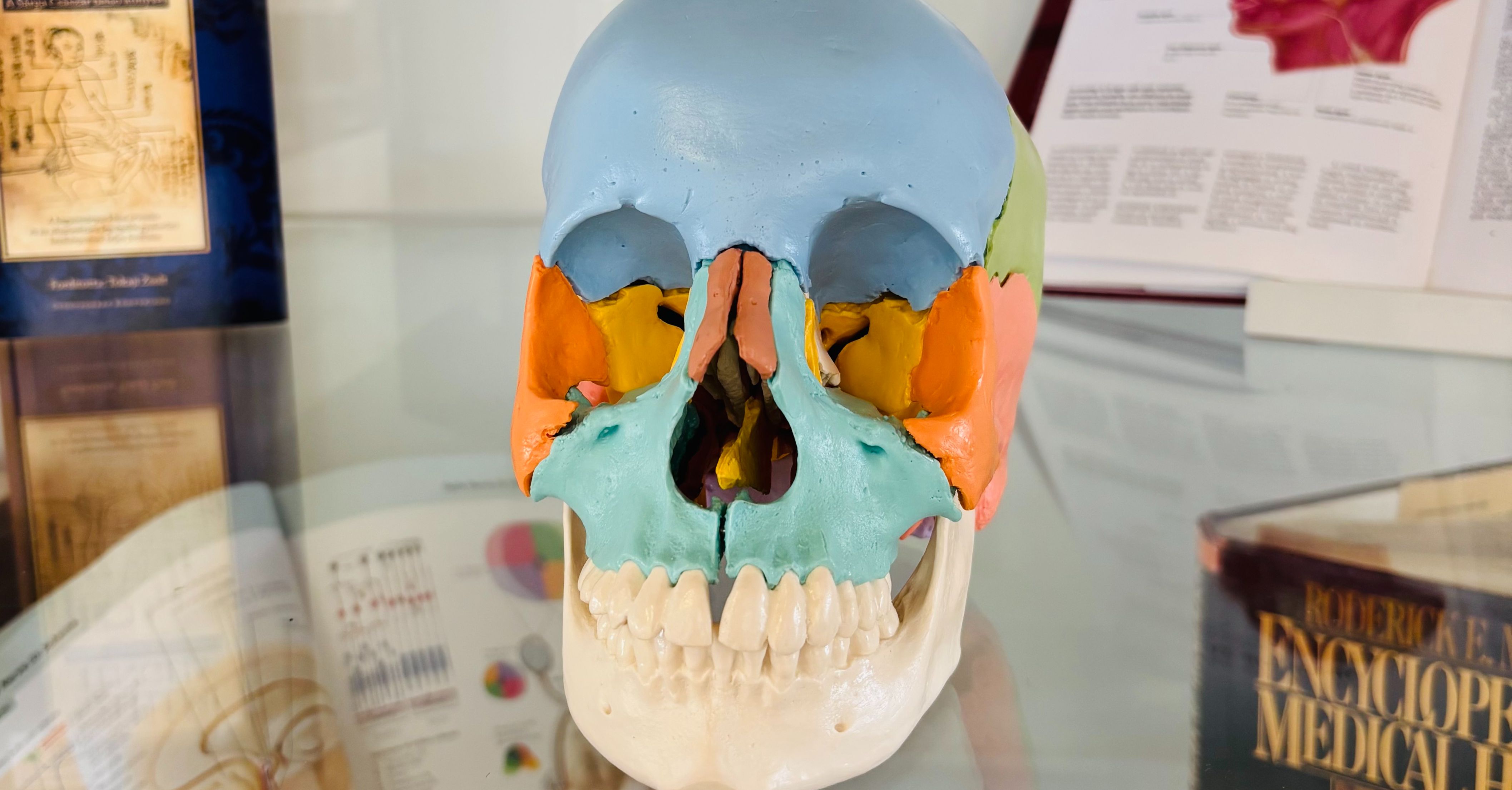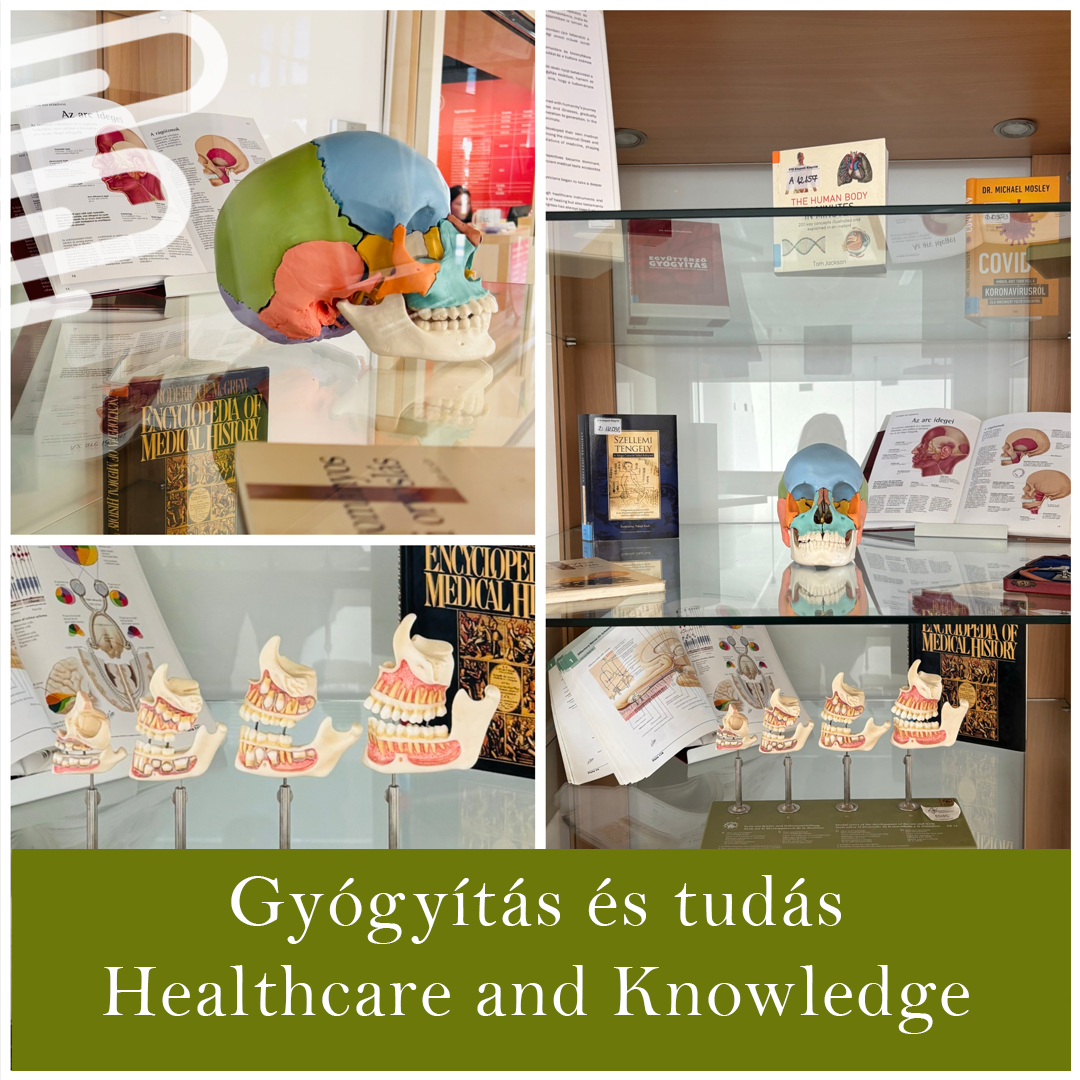Healing, and Knowledge, exhibicion

Our exhibition, Healing, and Knowledge, provides insight into recent medical practices through medical instruments and educational materials used in medical training.
The exhibited objects are not merely tools of healing but also imprints of human ingenuity and perseverance, reminding us that scientific progress has always been driven by human curiosity and the desire for a better life.
For those interested in the development of medical science and practice, we have prepared a brief overview of the cultural history of medicine.
The history of medicine dates back thousands of years, intertwined with the process of self-discovery. In the earliest times, accidental circumstances shaped healing methods, with experimentation and imitation playing key roles. Knowledge gradually developed and was passed down through generations. In prehistoric times, humans instinctively found solutions for treating injuries and illnesses, acquiring medical knowledge through experience. Given the circumstances, effective techniques emerged for wound treatment, bleeding control, and removing foreign objects.
As history progressed and experiences accumulated, people better understood their own bodies. In addition to individual observations, exchanging knowledge between cultures contributed to medical advancement. Ancient civilizations such as Egypt, Mesopotamia, India, and China developed their own medical systems, and many of the methods they used are still known and applied today.
The theoretical foundations of medicine were laid by ancient Greek and Roman physicians, such as Hippocrates and Galen. However, medical science took a backseat during the Middle Ages as religious approaches became more dominant. The Renaissance marked a revival of scientific inquiry with the rediscovery and critical analysis of ancient medical texts. Andreas Vesalius, one of the greatest anatomists of the Renaissance, re-examined ancient traditions and established new foundations for studying the human body.
In modern times, the development of natural sciences has been based on exact knowledge, with an emphasis on empirical evidence. Scientific thinking and various cultural domains were influenced by realism. The abandonment of speculation led to groundbreaking discoveries based on new methodologies, fundamentally transforming medical science and laying the foundation for modern medicine provides insight into recent medical practices through medical instruments and educational materials used in medical training.
The exhibited objects are not merely tools of healing but also imprints of human ingenuity and perseverance, reminding us that scientific progress has always been driven by human curiosity and the desire for a better life.
For those interested in the development of medical science and practice, we have prepared a brief overview of the cultural history of medicine.
The history of medicine dates back thousands of years, intertwined with the process of self-discovery. In the earliest times, accidental circumstances shaped healing methods, with experimentation and imitation playing key roles. Knowledge gradually developed and was passed down through generations. In prehistoric times, humans instinctively found solutions for treating injuries and illnesses, acquiring medical knowledge through experience. Given the circumstances, effective techniques emerged for wound treatment, bleeding control, and removing foreign objects.
As history progressed and experiences accumulated, people better understood their own bodies. In addition to individual observations, exchanging knowledge between cultures contributed to medical advancement. Ancient civilizations such as Egypt, Mesopotamia, India, and China developed their own medical systems, and many of the methods they used are still known and applied today.
The theoretical foundations of medicine were laid by ancient Greek and Roman physicians, such as Hippocrates and Galen. However, medical science took a backseat during the Middle Ages as religious approaches became more dominant. The Renaissance marked a revival of scientific inquiry with the rediscovery and critical analysis of ancient medical texts. Andreas Vesalius, one of the greatest anatomists of the Renaissance, re-examined ancient traditions and established new foundations for studying the human body.
In modern times, the development of natural sciences has been based on exact knowledge, with an emphasis on empirical evidence. Scientific thinking and various cultural domains were influenced by realism. The abandonment of speculation led to groundbreaking discoveries based on new methodologies, fundamentally transforming medical science and laying the foundation for modern medicine

Photos and exhibition curators:
Kádár Johanna, Eby Varghese Anna
Location:
Regional Library and Knowledge Center, Ground Floor, next to the registration desk
Pécs, Universitas Street 2/A